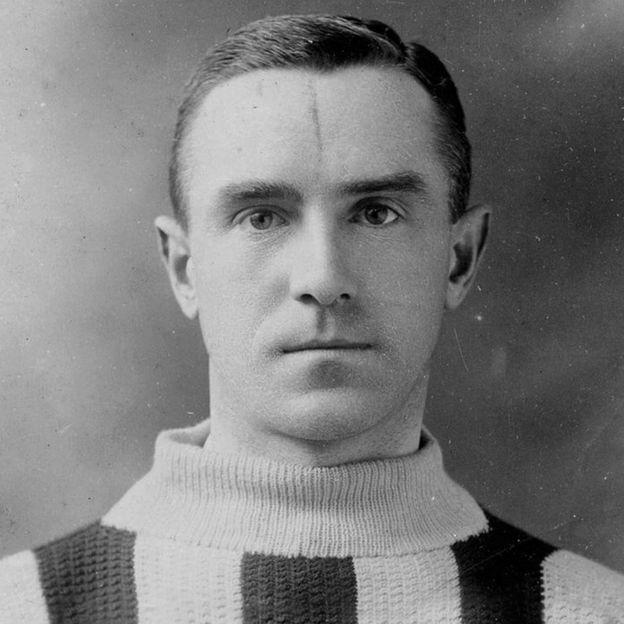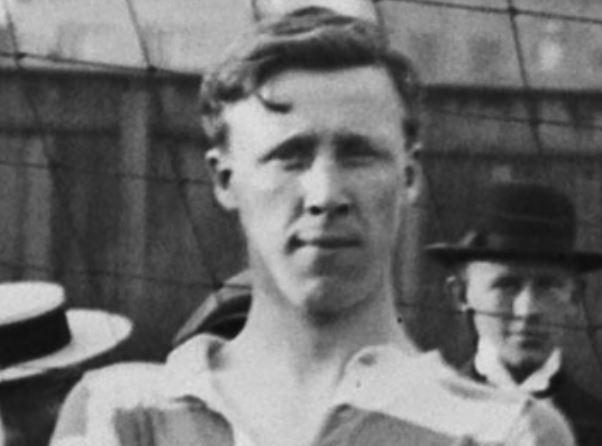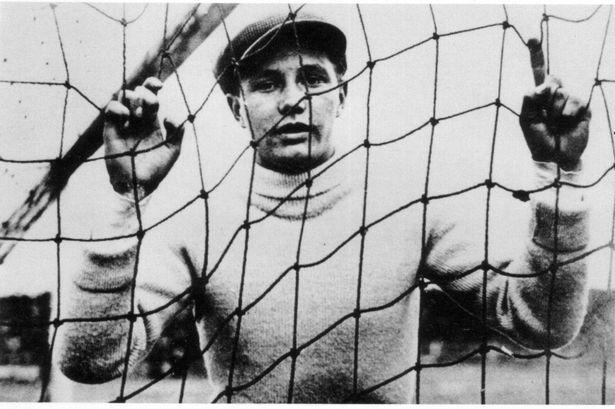As if I need any encouragement, thoughts of the carnage that was the First World War today allow me to discuss one of the most colourful characters ever to play for Celtic, albeit if only for one game, Leigh Richmond Roose.
Welshman Leigh Roose was one of the most important goalkeepers in football history. At a time when keepers could handle the ball anywhere within their own half, he had perfected the art of bouncing the ball, whilst evading challenges, as far up the park as the halfway line, before setting up attacks by launching it forward from there. This eventually forced the authorities of the time to amend the rules, limiting such allowable handball to within the goalkeeper’s own penalty area, as it remains today.
Roose retained amateur status throughout his career, although some reports claim that he ‘charged handsomely’ on his expenses. Frequently linked with high-profile ladies of that era and drawing media coverage for his exploits off-the-field, he had enjoyed top-flight spells at Stoke City and Everton and was the Welsh international goalkeeper by the time he signed for Sunderland in 1907. He was still the first-choice keeper on Wearside when he turned out for his country against Scotland at Rugby Park, Kilmarnock, on Saturday, 5 March 1910, in the Home International Championship.

The Scottish side that afternoon included five players from Celtic, the dominant force in domestic football of that era – Alec ‘The Icicle’ McNair (David Potter’s biography on McNair was published earlier this year). Willie Loney, captain Jimmy ‘Dun’ Hay, Jimmy ‘Napoleon’ McMenemy and the mighty Jimmy Quinn, the ‘Bhoy from Croy’ – whilst the great Billy Meredith featured for Wales.
A late goal from Falkirk’s Andy Devine won the match for Scotland, and they would clinch the championship by beating England 2-0 at Hampden the following month, thanks to goals from McMenemy and Quinn. Both Celtic forwards had endured a torrid time at the hands of the Welsh defenders at Kilmarnock, ‘Napoleon’ suffering to the extent that he would be unfit for Celtic’s next fixture, the Scottish Cup semi-final against Clyde seven days later.
Whether that factor, or indeed Leigh’s performance that day, would have had some bearing on Celtic’s decision to request the loan of the goalkeeper for the game at Shawfield, will perhaps forever remain a mystery. In any case, the famous Welshman would turn out for the club in place of regular Parkhead stopper, Davie Adams, who was suffering from pneumonia, Leigh Roose, no doubt, wearing his unwashed green-and-black Aberystwyth Town jersey, his lucky charm, under his Celtic kit. Jimmy McMenemy’s inside-forward position against Clyde would be filled by Willie Kivlichan, one of the few players to move directly between Celtic and Rangers, which he had done in 1907, Alec Bennett moving in the opposite direction the following season, despite later suggestions that this was a swap deal. Kivlichan would later pre-date John Fitzsimons, as Celtic’s club doctor, and poignantly would be on duty at Ibrox, his old stamping ground, on Saturday, 5 September 1931, when John Thomson suffered his fatal injury.
Presumably, Leigh would soon require a new prop to alleviate his superstitions, after the semi-final at Shawfield had ended in a 3-1 defeat for Celtic, in front of an incredible crowd of 38,000, Willie Kivlichan scoring for the Hoops. The goalkeeper’s eccentricity was demonstrated when he raced the length of the field to pursue Jackie Chalmers, the scorer of Clyde’s third goal, before offering his hand in congratulations. One can only begin to imagine the reaction of the visiting support that day, or of the current crop, should Joe Hart decide to do likewise. Perhaps unsurprisingly after that, this would prove to be his one and only game for Celtic.

Roose would finish his English career with spells at Port Vale, Huddersfield Town, Aston Villa and the then Woolwich Arsenal. He joined the army when war broke out in 1914 and was killed in the Somme carnage two years later, in October 1916, aged just 38. Seven months later, on 16 May 1917, Leigh’s Celtic teammate that day in Rutherglen, Peter Johnstone, would also fall in service on the green fields of France, in the battle of Arras. Peter was only 29.
‘To man’s blind indifference to his fellow man.
To a whole generation that were butchered and damned.’
Two young men cut down in their prime, highlighting yet again the horrific and absolute futility of war.
Rest in peace.
Matt Corr




